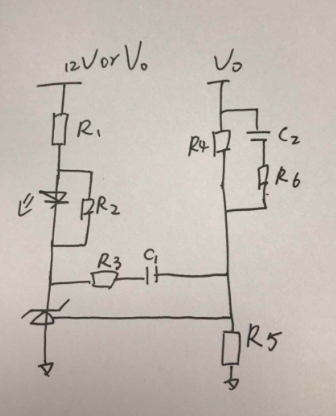Other Parts Discussed in Thread: UCC25630-1EVM-291, TLVH431, ATL431, TL431, UCC25600
The feedback chain of UCC25630X EVM schematic is shown below.
1. how to set the optocoupler LED forward current (IF)?
2. how to select R23, if the output voltage is 24V.?
3. what the function of R20?
The CTR value of the optocoupler VO618A-3, is 100%-200%, so the current flow from FB pin to PGND is 100%-200% of IF, the rough value of IF i calculated is about (Vout-Vled-Vref)/R23=(12-1-1.24)/6k=1.6mA.
However, the internal current source IFB at FB pin, is only 85uA, which is much smaller than the current flow from FB pin to PGND.
4. How to explain my calculation result?
By the way.
5. what's the function of the D10 and R21 shown on the picture.



